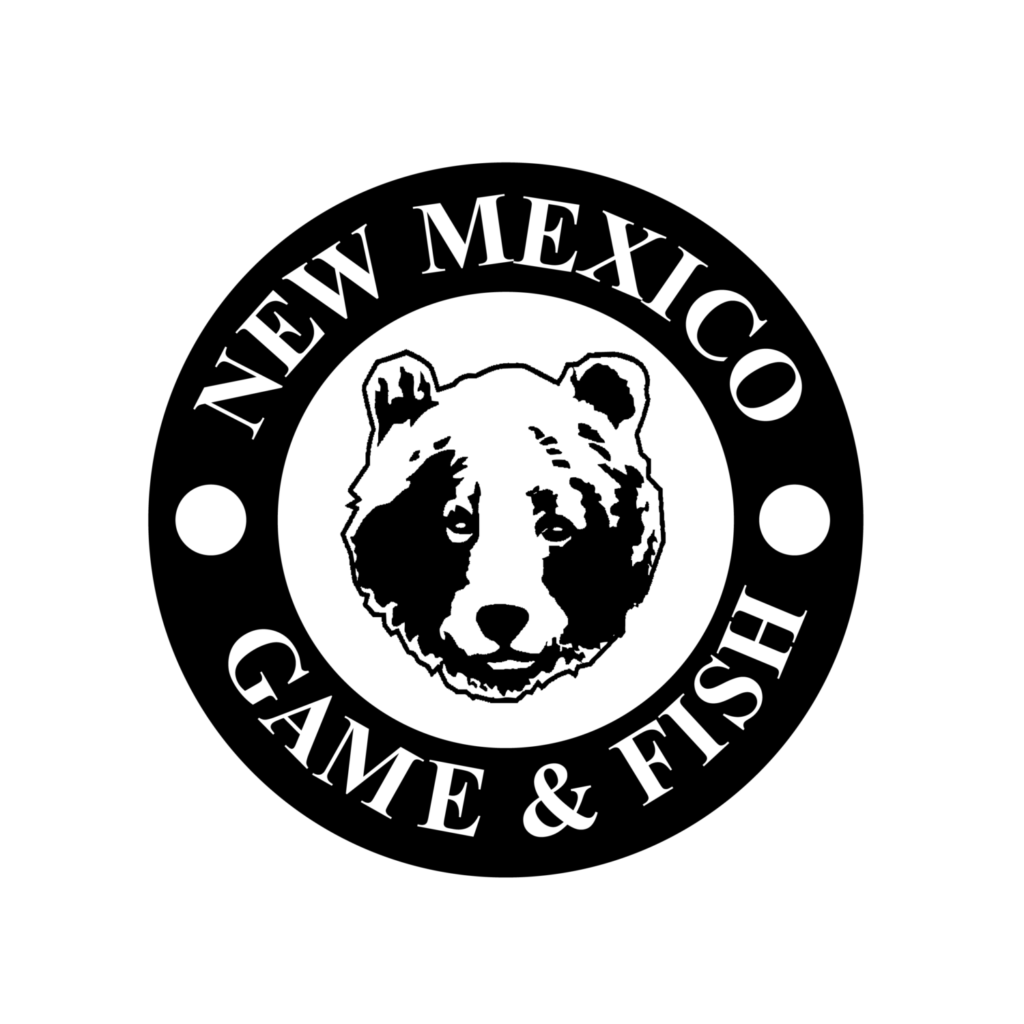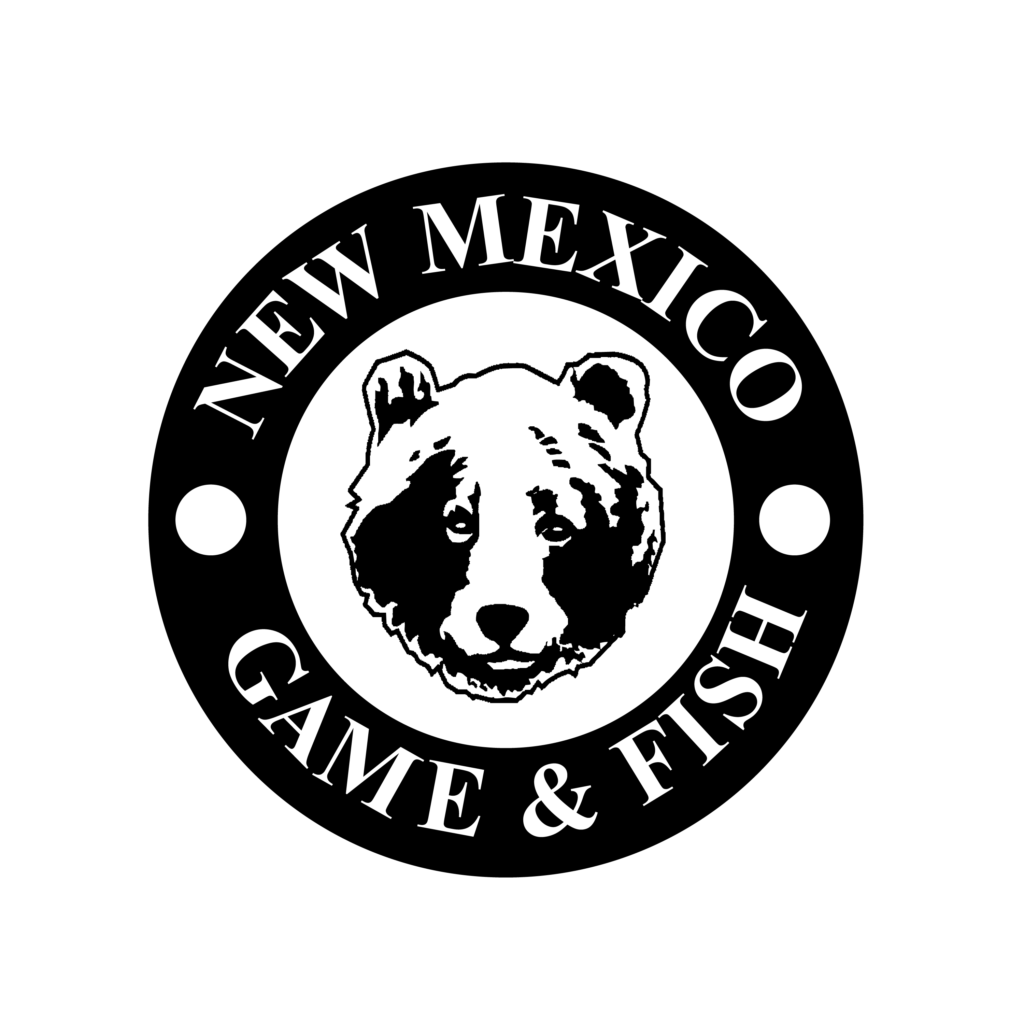Following is a selected project highlight from the Share with Wildlife mission to assist all New Mexico wildlife in need, no matter what species.
Creating A New Curriculum at Sandia Mountain Natural History Center
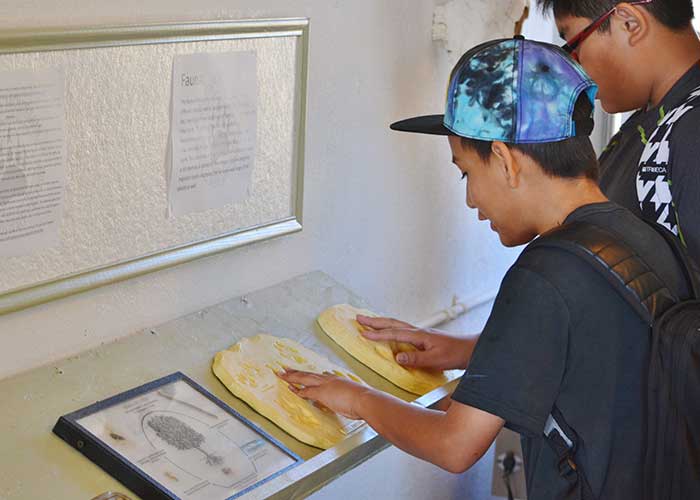
Students at SMNHC pre-COVID-19. (Paul Mauermann)
What are some of the rare and threatened species of wildlife found in New Mexico? Why are these animals threatened and what can humans do to reduce these threats? These are some of the many questions that the new curriculum developed by the Sandia Mountain Natural History Center (SMNHC) helps students answer.
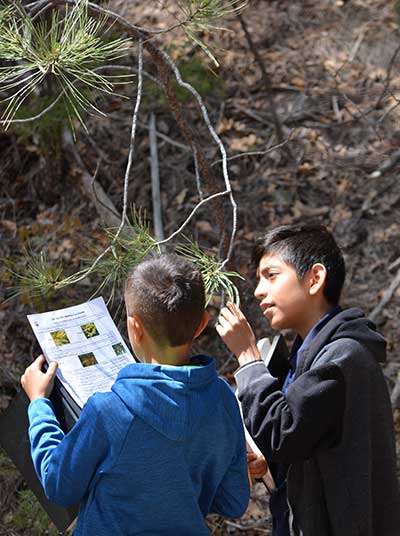
Students using an identification key to identify trees at SMNHC. (Fiana Shapiro)
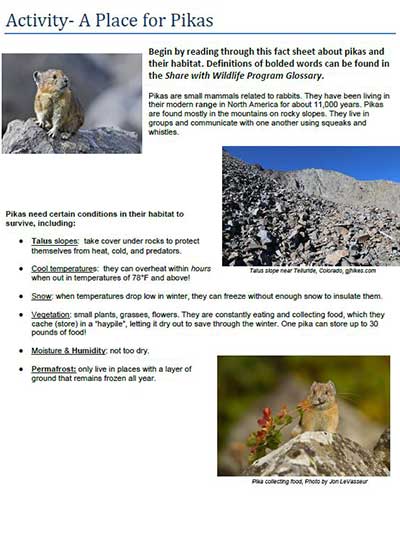
Information on habitat needs in pika activity. (SMNHC curriculum).
This spring, SMNHC used Share with Wildlife funds to produce a new curriculum including five lessons focused on Species of Greatest Conservation Need (SGCN) in New Mexico that were bookended by an introduction to endangered species and a final activity where students produce a presentation about an animal of their choosing. SMNHC had started the spring semester planning to not only expand their existing environmental education curriculum but to them implement this curriculum with students from Albuquerque Public Schools. Their lessons normally involve a classroom visit, as well as an opportunity for students to visit the SMNHC and contribute to long term monitoring conducted at the Center by helping to collect ecological data. Then restrictions and closures associated with COVID-19 required that they quickly modify their plans for providing environmental educational experiences for students in Albuquerque and other parts of New Mexico.
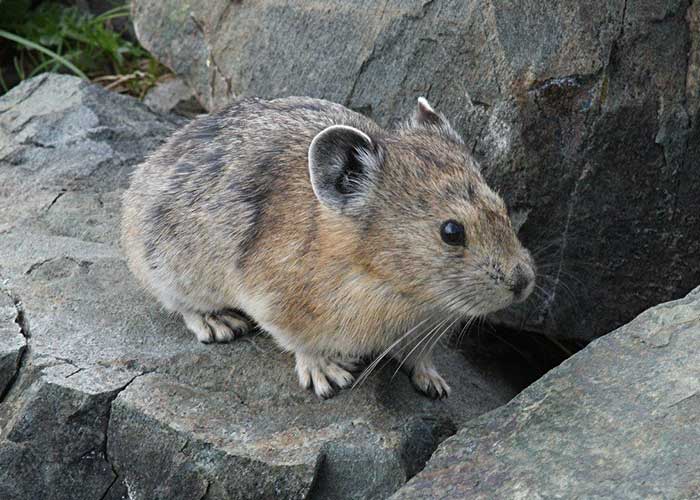
American pika. (James Stuart)
The new curriculum focuses on species found in a diversity of environments and threatened by a variety of stressors. One lesson looks at the habitat needs and important role of the American pika in mountainous areas in northern New Mexico. Students are asked to evaluate data regarding past, present, and future climatic conditions in an area where pikas are currently found and consider the impacts of probable future climatic conditions on pika habitat populations. In another lesson, students learn about the habitats and threats facing the New Mexico ridge-nosed rattlesnake found in southwestern New Mexico. They are then asked to develop their own plan for how to protect this species over the next 30 years.
These new, SGCN-focused lessons can be used in the classroom or at home, making them optimal for use during these times when in-person environmental education is not possible for many students in New Mexico.
